
The NSW-7000 Series: a new model full of Omori individuality come to fruition pursuit of the user’s perspective and technological capabilities

Development began by considering the user’s perspective

The modular structure greatly facilitates user maintenance

First, we mechanical designers, who were responsible for the general framework, discussed the design of the machine with the electrical designers, who were in charge of the control system. In the mechanical design, we considered revising the unit layout and various other ways to improve ease of cleaning and replacement for users, which had been incorporated into Omori’s existing machines. Another key point of our work on the NSW-7000 was to greatly incorporate a modular structure that would make maintenance easier.
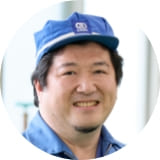
A modular structure means that units can be independently attached and detached, and therefore, replaced. In the manufacturing department, we often communicate directly with customers who use our machines on site, and the modular structure provides great benefits for them.
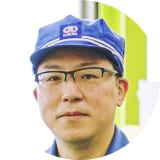
For example, it used to be that if one unit malfunctioned, then the entire machine had to be shut down. However, with the modular structure, we can remove only that one unit, install a replacement unit, and have the faulty unit sent to us for repair, eliminating the waste of both time and manpower.

We redid all the electrical design from the ground up to realize easy-to-use specifications.
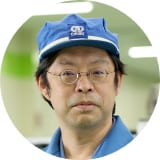
The electrical design’s control section has also undergone a major change with the NSW-7000. Once again, user-friendliness was the goal: the trick was to make the screen intuitive and easy to operate.
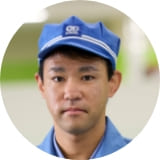
We completely redesigned the screen. We enlarged it to make it easier to look at, and there were many other upgrades to make, such as changing button operations to swipe operations. We also wanted to take this opportunity to speed up the more slowly operating parts, so we tried upgrading the specs to make them faster. We had to meet the challenge of increasing performance while still including all the existing functions and ensuring expandability for functions to be added in the future.


In order to incorporate the modular structure I mentioned earlier, we replaced the existing machine’s configuration where various drives were connected, to one where each drive works on its own, thereby actually increasing the number of devices to be controlled. Anyway, we didn’t have enough space for the control functions, and I had to go back and forth with Mr. Miyahara of the mechanical design department, always asking him to “Give us (the electrical design people) some real estate, too!” [laughs]. We had to be creative in many ways, such as using thinner terminals for wiring, and we were always fighting for just another 20 or 30 millimeters.

Making a more “fun” machine–A major change of direction mid-project
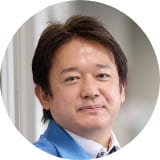
Development started in 2017, and we focused the project initially on mechanical and electrical design, but had an unexpected turn of events along the way. When we gave a progress report to the president at a project meeting after the general framework had been decided to a certain extent, he remarked, “That’s no fun!” [laughs]. He asked if we couldn’t incorporate more of the “fun” that is part of the OMORI Spirit that is Omori Machinery’s guiding resolution, and other unique aspects that our competitors don’t have. That’s when we came up with the new idea of incorporating an automatic film bonding device that doesn’t use double-sided tape.

Until now, all manufacturers have used double-sided tape for connecting sections when replacing film, but this technology automatically bonds using heat sealing without using double-sided tape. Such devices have existed in the past, but none had ever been mounted on a packaging machine. When we made the decision to build this technology into the NSW-7000, both the concept and design changed considerably, so it was like starting from scratch again.

This posed difficulties for all departments because the project had already advanced quite far. But as it turned out, this became one of the selling points of the new machine, so I’m glad that we worked so hard on it.

Installing a unique revolver-type film unwind unit supply other companies don’t have

Joining with double-sided tape when replacing film is something that a customer using the machine has to do, so I think being able to eliminate that hassle would benefit the user greatly. In fact, when I went onsite and observed the process, the operator had to stop the machine, measure, and apply the tape–tasks that were time-consuming and prone to error, so this was an area where I felt there was a lot of loss.
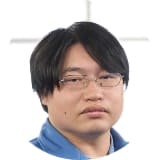
Designing from the user’s point of view was originally a main concept for the NSW-7000, so we also designed the film supply in pursuit of ease of use. For this automatic joining device as well, we adopted a revolver-type film unwind unit supply with the film set in a low position for easy operation by the customer. When setting the film supply, we were very particular about making it easy for the user to apply the film. There are many aspects of ease of use that don’t come out in the calculations, such as how much space you will need for the hand to get in, so in our design we carefully considered those aspects in the layout while also keeping space and cost to a minimum.

We also had a tough time with the program for the film supply part. Even though we were able to put the program itself together, it often did not work as expected. It would have been fine if the problem was simply with the program, but it was often the case that the program did not work well in combination with the machine. This was an area where the electrical design department and the mechanical design department had to have detailed discussions, making improvements as they asked each other to make changes.

Verify, verify, and verify again: multiple post-debut verifications and improvements
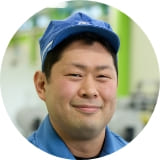
Once the machine, program, and equipment were in place, we at manufacturing were mainly in charge of the stage when the machine was at last put into operation. Since it was a completely new machine, when we actually did start using it, many problems arose, such as parts not moving as we had expected. Each time, we would ask the mechanical designers to rebuild the parts and put in the new ones, and the electrical designers would make improvements to the program to match the new movements. We repeated this verification process over and over again for a long period of time.

In addition, when we went beyond mere operation to seek precision, we found that the machine’s current operations lacked precision, and we had a lot of difficulty figuring out how to improve it. Now, after repeated verifications and upgrades, I think it works much better.


After a lot of in-house trial and error, the first model was completed in March 2019. We then made further adjustments, and got to unveil it for the first time at JapanPack (the Japan Packaging Industry Exhibition) in October of that year. However, our work didn’t end with the unveiling; we continued to verify and upgrade. Since this is a development machine, we have a process wherein customers use the new machine as pilot users (with certain conditions) and we use their feedback to continue making improvements.

When a machine is actually used in the field, you find a lot things that are lacking. A customer will ask us if we can’t make something better, we in the manufacturing department then relay this feedback in-house, the improvements get made, and then the machine is used again in the field. As we repeat this process, the machine keeps getting better and better.

This time with the NSW-7000, we had a pilot user whose requirements just so happened to be quite demanding. It was tough because our initial hurdle was so high, but the hard work we put in enabled us to eliminate a lot of problems right there. On the contrary, if it had been simple for us from the start, we might have had ended up with even more difficulties.

The result: high praise from customers in the field

Thanks to these efforts, we’ve received high praise for the NSW-7000 from our customers. People are saying that cleaning and maintenance is easy where it used to be difficult. When I’m actually demonstrating the machine to explain how it works, people are surprised, and say things like, “Wow,” or “You couldn’t open this part before, but now it opens.” When I see the revolver-type film unwind unit supply machine in use, I am also amazed at how much faster and easier joining the film is than it used to be. Another benefit is that there is less material waste.

Right now, we’re still in the release stage, but if the NSW-7000 gets used for longer periods of time and something breaks down, I think people will then realize the advantage of the modular structure that makes replacing parts easy.

OMORI’s unique technological capabilities and tenacity have produced a revolutionary new machine

OMORI has long been known as a technologically strong company, and we pride ourselves in our technological capabilities. I think it was great that we were able to do something new with our core product, the horizontal form-fill-seal machine, by using that technology to incorporate ease of use from the user’s perspective. From the start of the project to this point, all our team members have been working at their regular jobs, so it must have been difficult because when people were busy, the time they could devote to this project was limited. We worked steadily and persistently on development, never giving up, and it is deeply moving to know that we were able to bring the NSW-7000 to the market through the combined efforts of everyone in the mechanical, electrical, and manufacturing departments.

Recent years have seen customer demands increasing year by year–on machine capacity, ease of use, ability to handle various materials, and, of course, cost. These demands come to us like a thousand fungos in batting practice [a grueling training routine], and the grit and tenacity to solve them one by one is something that I think the members of this company have in common. We never give up. That’s the kind of people we have at Omori.

However, even after all we’ve done, there are still areas where we are lacking, so we’ll keep trying to improve and make better things.

We’ve had a lot of problems thus far, so I think it’ll get easier soon [laughs].

When will that be, I wonder…? [laughs].
Project Members
NSW-7000

- Sales Engineering Dept.

- Mechanical Design Dept.

- Mechanical Design Dept.

- Electrical Design Dept.

- Research & Development Dept.

- Manufacturing Dept.

- Manufacturing Dept.

- Manufacturing Dept.






We began developing the NSW-7000 in the fall of 2017 as the successor to the current S-5000 series. One of our concepts during development was “ease of use from the user’s perspective.” This is because, while our machines have a reputation for high performance and durability among our customers, some of them also demand simplicity of adjustment and use, so we decided that improving satisfaction would be one of our next goals.
In fact, before we started developing the NSW-7000, we built and exhibited a concept machine in the S-5000 series featuring unit-by-unit attachability and removability for ease of replacement, and it was well received. We began the NSW-7000’s development based on this feedback.